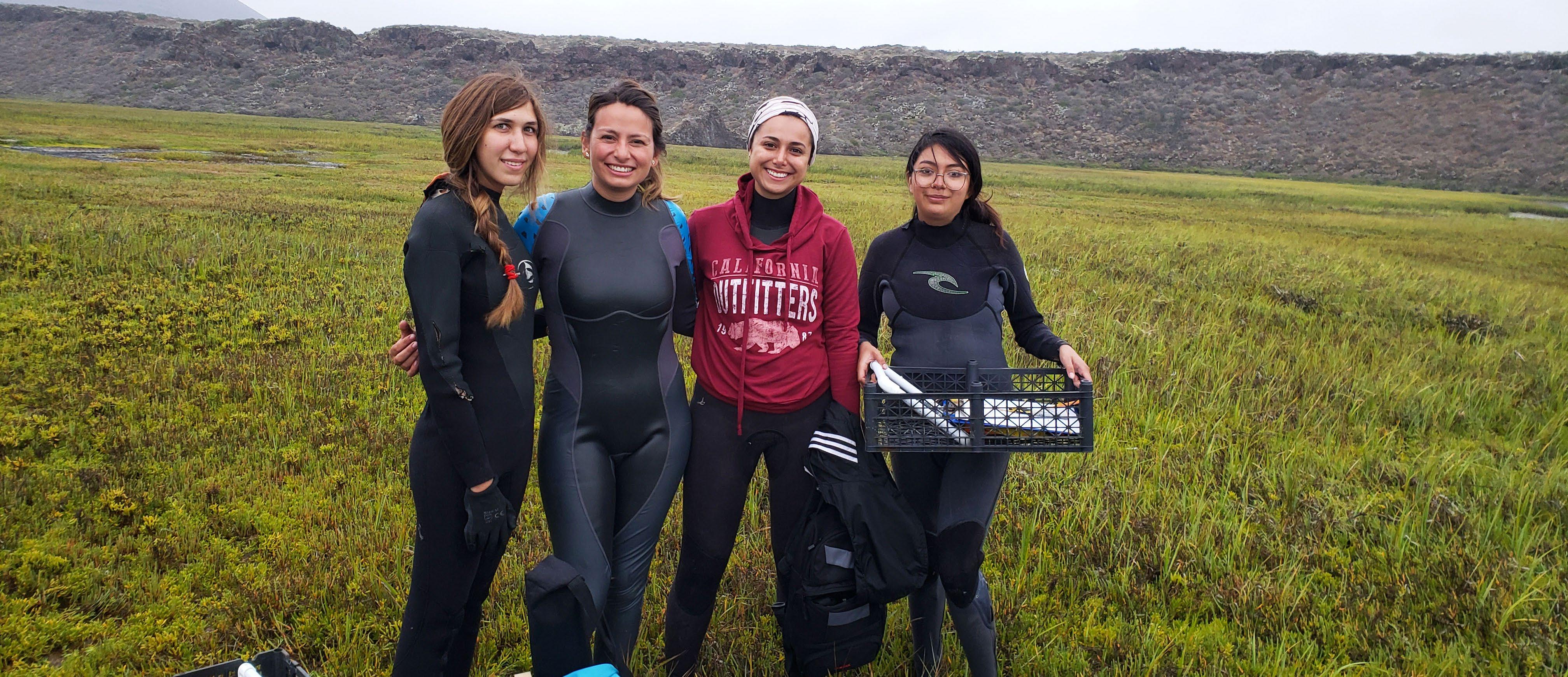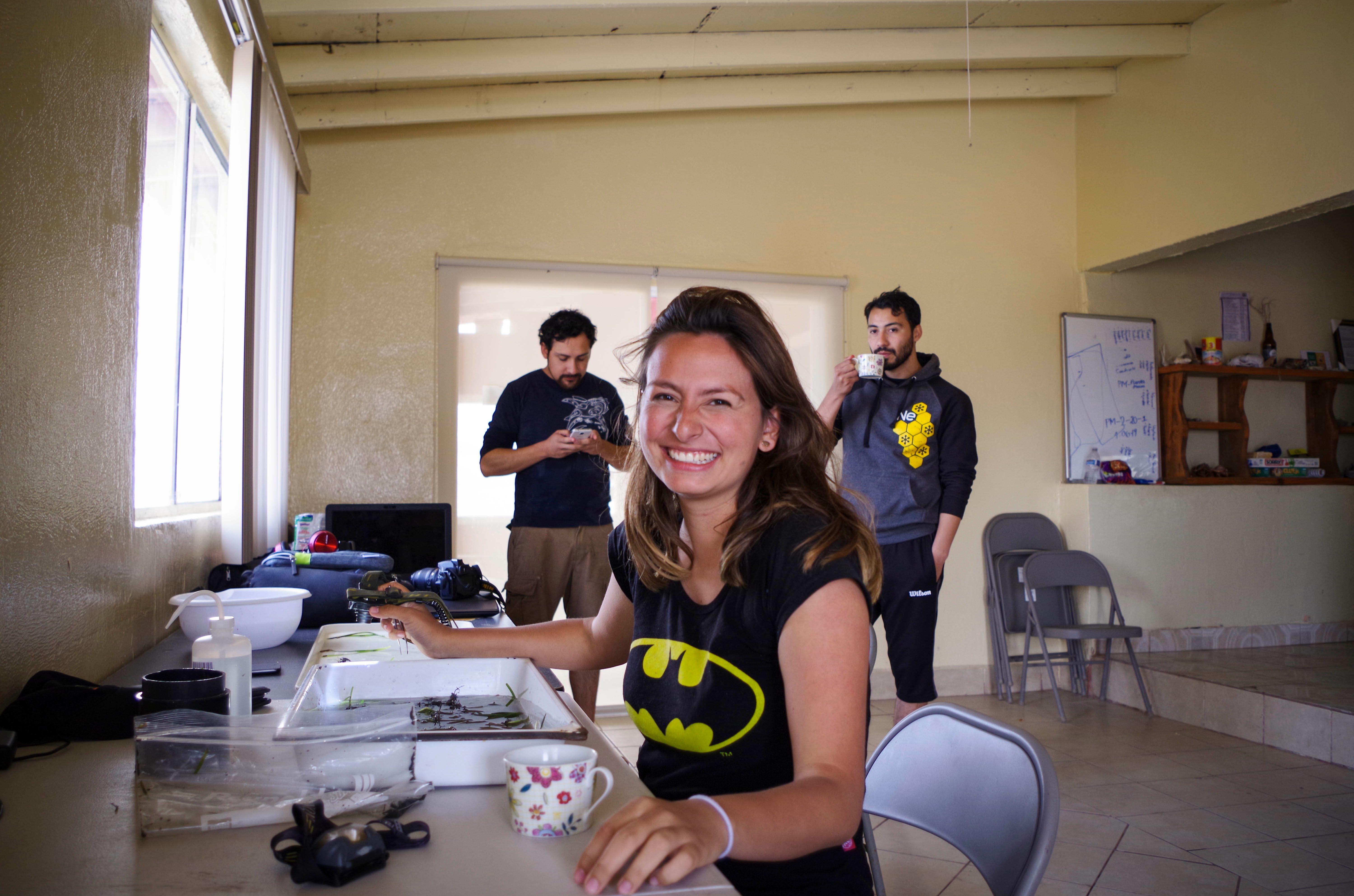
5 minute read
Biology and Photography: Tools for Conservation
Biology and Photography: Tools for Conservation
My experience as field correspondent at Terra Peninsular
Advertisement
By Carolina Mildred Rivera Photos by Oscar Hernández and Carolina Rivera
lmost at the end of my university life, one of my dreams came true. For a long time, I have dreamed of traveling to little-known places to explore and marvel at nature, and at the same time, to show others what my eyes observed, just like in the nature and wildlife documentaries that I watched many times as a child. A

Sofía, Montserrat, Carolina and Alitzel. Photo: Oscar Hernández.
I visited Baja California a year ago and met the staff members of Terra Peninsular. I was amazed at their activities and goals to protect nature, so I did not hesitate to go back when I was accepted to do my internship with them during the summer.
What I did not know about this experience is that it would represent a great challenge: to carry out a multidisciplinary task where in addition to learning and putting into practice my Biology career, I would be taking photographs and working together with the Department of Communication. My main task was to document all the experiences in the field.
Before Baja California, I did not have the basis of how to take a picture or edit videos for science communication purposes, which represented a professional weakness. Still, I accepted the challenge of learning and showing how conservation is done in Baja California.

Seagrass sampling. Photo: Carolina Rivera
This is how the task of learning the basic aspects of photography and video began with the help of my coordinator at Terra Peninsular, Bryan Gerardo, and my colleagues Alitzel, Sofía and Montserrat. After a few days, my fear of the camera was gone and we began preparing to start the work in the field. All the equipment they had provided me was ready to capture the most important moments of the monitoring and sampling activities.

Montserrat analyzing samples. Photo: Carolina Rivera.
The first adventure began with the monitoring of the snowy plover (Charadrius nivosus) and the least tern (Sternula antillarum) in the Bahía de Todos Santos Shorebird Reserve.
At the beginning, I found it difficult to document. I wanted to take pictures of everything I saw, and that somehow interfered with the field work, since I wanted to be on both sides at the same time: take photos and participate in monitoring and sampling efforts.
At that time I believed that I should concentrate on a single task. As a biologist I wanted to learn as many field techniques as possible, but on the other hand, I had the mission of sharing what my colleagues were doing in order to perform effective conservation. That was the biggest challenge I had during my internship.

At the end of sampling. Photo: Carolina Rivera.
There were moments of great stress because I wanted to do two activities at the same time, frustration for not being able to successfully capture the images that my eyes saw, as well as despair when trying to walk through a wetland with the mud up to the knees while carrying a camera and a tripod, and worried that something could happen to the equipment or myself.

Setting up a camera trap. Photo: Carolina Rivera.
Fortunately, nothing bad happened. On the contrary, at the end of the second sampling week, we had already formed a small team that eventually became a family. The days passed and there was always laughter at breakfast, lunch and dinner, the talks became more enjoyable, the field work was being carried out so effectively that it even gave us time to have fun at the end of each sampling.

Álvaro receiving instructions to install a nesting fence. Photo: Carolina Rivera
The most important thing for me was to be able to capture spontaneous moments of tiredness when getting up at dawn and going out to the wetland or to the field to check the traps, the emotion of being able to hold a snowy plover chick or a San Quintin kangaroo rat (Dipodomys gravipes); as well as capturing funny moments, like when someone does not know what a choya is (Cylindropuntia) until she has one stuck on her foot, of feeling free and tiny surrounded by nature at Valle Tranquilo, or having a delicious coffee in front of the ocean after finishing the tasks of the day with colleagues and friends with whom you share the same interest of preserving and conserving nature.

Sampling with camera traps in Valle Tranquilo. Photo: Carolina Rivera
With this experience I put into practice the four years of my professional career, I left my comfort zone, developed in new work areas and met prominent people in the area of Biology, which expanded my vision regarding the different ways in which conservation can be done.

Beauty in Valle Tranquilo, an Agave shawii. Photo: Carolina Rivera
At the end of my internship, I realized that it is not so relevant how much or little you know, but how committed you are to learning new things and taking advantage of the opportunities and challenges you have in front of you. I believe that conservation can go further when it goes hand in hand with other disciplines such as communication, and that without a doubt it is worth becoming multidisciplinary for a good cause, the cause in which you believe.

Waiting to install a camera trap. Photo: Carolina Rivera
♦ CAROLINA RIVERA is a ninth semester Biology student at the University of the Americas Puebla (UDLAP). Her main interest is Conservation Biology and she was an intern at Terra Peninsular during the summer of 2019. carolina.riveragz@udlap.mx .







